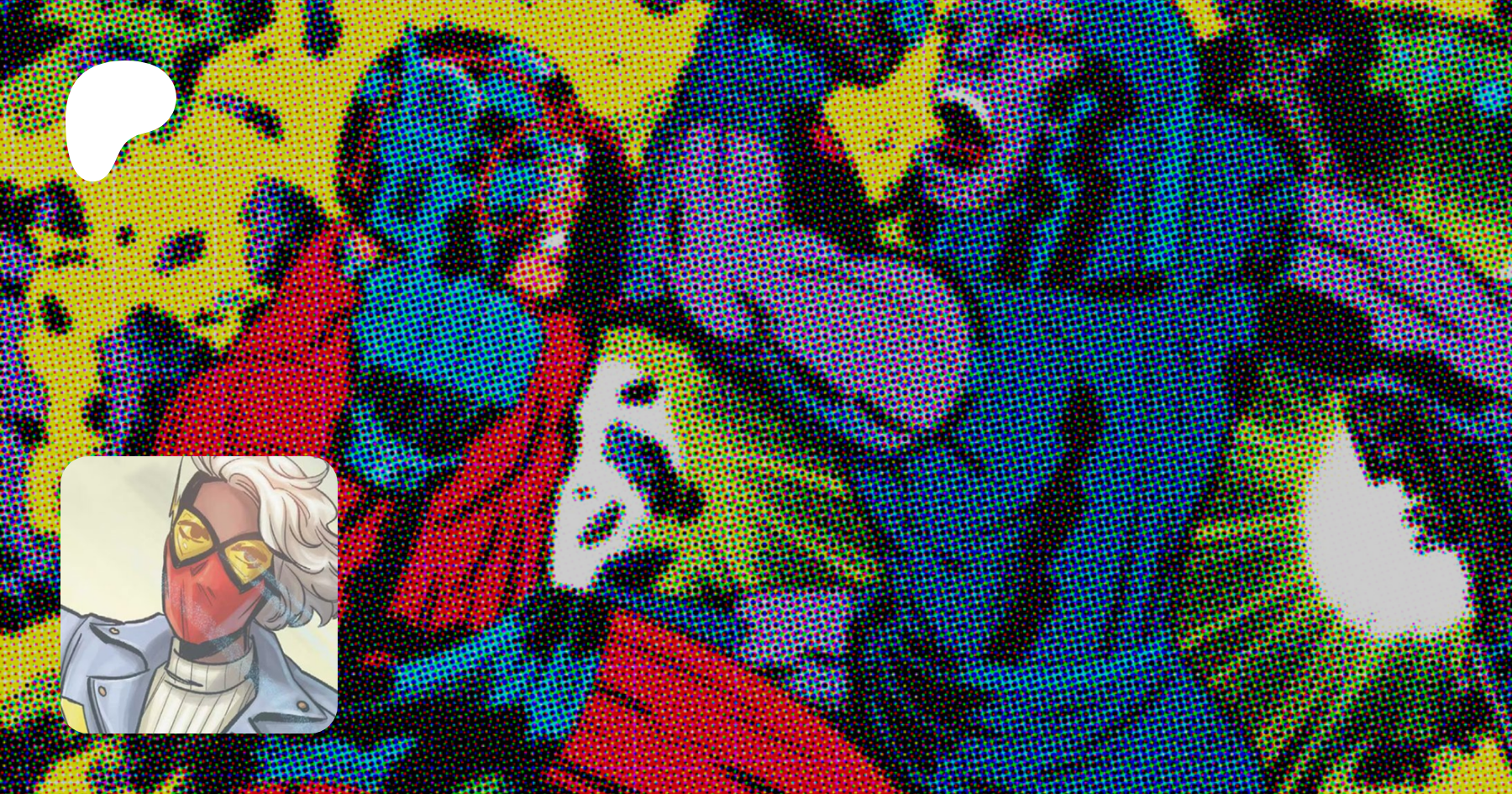- Comic Frontier
- Posts
- Chris Weston Talks Paranoid Gardens #2, working with Gerard Way, and more!
Chris Weston Talks Paranoid Gardens #2, working with Gerard Way, and more!
Plus an exclusive first look at the issue!

Chris Weston is a British comic artist known for his acclaimed work on The Filth, Judge Dredd, and The Twelve. This year, Weston teamed up with Doom Patrol scribe and My Chemical Romance singer Gerard Way, and Shaun Simon, Dave Stewart, and Nate Piekos for a new comic series Paranoid Gardens, following a care center with some very unusual staff and patients. We spoke with Weston about the surreal tale and have a first look at the second issue coming later this month.

Q: How did this project come to be?
A: I wish there was an exciting answer to this question, like I bumped into Gerard at some wild party in the Viper Room and we cooked up this story together whilst partaking in hallucinogenic mushrooms. Alas, the truth is infinitely more mundane. Gerard and his writing partner, Shaun Simon, had already done all the heavy lifting with the scripts. All that was left was to find a suitable artist. I know Gerard is a fan of 90s Vertigo comics, and my art featured prominently during that period (on books like The Invisibles, The Filth, Lucifer, The Dreaming, Swamp Thing, all the classic titles). I like to flatter myself and think Gerard and Shaun saw me as the weathered old pro that gets recruited into their heist for one last job, like Carl Reiner in Ocean’s 11. Whatever the reason, I leapt at the chance, mainly because I saw an opportunity to draw something truly bonkers again, a muscle I haven’t really exercised since The Filth.
Q: What has collaborating with Gerard Way and Shaun Simon been like?
A: Again, it’s not as exciting as you’d think it might be. It was just “business as usual” for an old hand like me. I just got a script in my email inbox, and then I devoted nearly every hour of the day trying to turn their words into a followable series of images. There was almost zero interaction between the creators. Daniel Chabon, the editor, is the point man, and he kept all the wheels oiled brilliantly, but very little discussion was needed between all of us. I think we only had one zoom call in total. The scripts were coherent and arrived punctually, so it all ran extremely smoothly, unlike some comic-book projects I’ve been involved with in the past. We got all the books finished way ahead of the deadlines, so I didn’t need to panic unnecessarily.

Glenn Fabry
Q: It feels like sometimes rock stars work on comics as a vanity or cash-in project, but Gerard is clearly passionate about the industry and making good stories — and has done so time and time again with Doom Patrol, Umbrella Academy, and other works. Is it unfair someone can be so good at two totally different things?
A: Hah! It is totally unfair! He’s insufferable! I have no other skills aside from my current passion for restoring old garden chairs and weeding the pavements outside my house, neither of which make me any money.
Q: Have any of your past experiences helped shape the world of Paranoid Gardens? You have an extensive resume between your work with 2000 AD, Grant Morrison, and several major publishers.
A: I think so. I immediately had a good idea of how to approach the material. In contrast to all the weird and convoluted ideas in the script, I decided to tell the story as “straight” as possible. I used easy-to-read layouts, almost European in style, similar to TinTin books. I decided to avoid overlapping panels; I kept all the action within the panels and rarely let the art wander off-bleed. My duty was to service Gerard & Shaun’s words, so I chose a simpler, more coherent story-telling style. I hoped we could produce a work that might appeal to a wider audience beyond the regular comic-book buyers; something that Moore & Gibbons succeeded doing with Watchmen. I think some people are put off from reading comics when they are faced with complicated page layouts (that might require a bit of effort or practice to follow). I wanted to make it as easy for them as possible.

Q: The world of Paranoid Gardens, specifically the titular care center, is surreal in nature, with everything from aliens, ghost janitors, and a heavily medicated Golden Age hero (who sort of resembles Tom Strong); what was it like to help bring this world to life with Dave Stewart and how much direction typically do Gerard and Shaun provide on scripting things out?
A: Gerard provided his own designs for a lot of the characters. I thought they were great! I told him he should draw the comic! I took those designs and “Westonified” them. That basically means drawing them in a more realistic style with a lot more shading and texturing. I do like to add unnecessary detail!
Q: Did you feel like you have less restriction on a property that doesn't seem to have any rules?
A: I very quickly decided on my own restrictions as I outlined earlier: keeping the storytelling and the layouts simple and easy to read. Mood-wise, I wanted it to be calm and atmospheric rather than loud and zany like The Umbrella Academy. I wanted to downplay the drama, rather than amplify it. Luckily, Dark Horse hired Dave Stewart to colour the art and he got the “vibe” immediately. The colours he’s done are so subtle and complimentary… with the occasional explosions of psychedelia. He’s blown my mind! Honestly, it’s worth buying the books for his beautiful colours.

Q: Dark Horse has called Paranoid Gardens "Derek meets Doctor Who on Acid," are there any other properties that inspired or helped bring it to life?
A: For me it was The Prisoner, possibly my favourite TV show. It shares a similar vibe, where our hero is stuck in a seemingly benign, serene and antiquated location… but there are strange things shifting behind the walls. I was also influenced by British TV shows like “Quatermass” and the BBC adaptation of “The Day of The Triffids”. What these shows lacked in budget, they made up for in atmosphere and verisimilitude. They all felt a bit grainy, de-saturated and grimy in comparison to the gloss of US TV shows. I wanted to capture that, and used a very soft black pencil to add a bit of texture to the art. It was great for suggesting stains and shadows. Paranoid Gardens is set in a run-down care-home with mildewed wallpaper and ugly, patterned carpets; I tried my best to make it just as much a character as the main cast.
Q: What is your favorite character to illustrate?
A: I think I’m a fan of Doctor Zerc. The villains are always fun to draw as their duplicity can give them a wider variety of facial expressions to draw. Villains can get to be ferocious and charming.

Q. Why do you connect with them?
A. Well as a bearded, pot-bellied middle-aged man, it wasn’t hard to put myself in his shoes. I usually end up using myself for photo reference, and having a character like Doctor Zerc in there, with similar body proportions to mine, helped a great deal. I’ve always said there are similarities between the professions of acting and comic-book illustrating. You have to think about a character’s clothes, facial expressions and body language; all the same decisions an actor has to make.
Q: What are the challenges of telling a story about mental health, aging, and corruption through such a bizarre (complimentary) lens?
A: Paranoid Gardens arrived on my desk in the wake of the Covid epidemic. The UK saw a massive decline in mental health during that period for all sorts of reason: lack of contact with loved ones, the deaths of relatives, isolation, uncertainty, the interruption of education and health maintenance etc. I think as a whole, society feels a bit more fragile and insecure and we could all do with a bit of extra care. The melancholic atmosphere of Paranoid Gardens taps into that spirit. A lot of big businesses used the general malaise to make something of a land-grab; there is ongoing discomfort at how huge Government contracts were given away to specific Party donors who delivered very little in return. There’s a reflection of this situation in one of the subplots of Paranoid Gardens: a huge Entertainment Corporation has plans to take over the Care Home in order to harvest the healing properties of the land it’s built on; they care nothing for the residents. The Care Home is a microcosm of the society we live in, with its unfortunate quirky inmates at risk from manipulative forces. You’ll have to read it to find out if our lead character, Loo, has a way of fighting back against these forces (and her own psychological problems).

Q: How fun is it to draw some of the more absurdist elements of the comic, such as Dr. Zerc's chase for immortality while wearing a big monkey mask?
A: You’ve probably already deduced how much I love drawing Doctor Zerc, mostly because he’s so easy to draw. Illustrating Loo was a much harder challenge. I’m not the greatest at drawing women, so I have to put extra effort into that. I think there are very few truly great male comic book artists who are good at drawing believable female characters. Arthur Ranson, Guy Davis and Francois Boucq immediately spring to my mind as male artists who seem to understand realistic female forms. There are plenty who are fantastic at stylized, sexy women who look like they’ve stepped out of an issue of a Sports Illustrated Swimwear Special (and I’m a huge admirer of that skill), but it wouldn’t have been appropriate for Paranoid Gardens.

Q: How exciting has it been to see the reception to issue one and what can you tell us about issue two?
A: I’m so grateful for any positive reviews we’ve received, and I make a point of thanking anyone who’s been kind enough to say nice things about the book. I don’t take it for granted at all. What can I say about Issue Two? The plot thickens, as the old saying goes! Loo has more flashbacks to an awful incident in her past; romance blossoms between Susanne and the Sikh paramedic; The Monkey Men launch an incursion on the Gardens… and we witness the entrance of The Beekeepers! Bizarreness that will blow your mind and steal your heart!
Paranoid Gardens #2 comes out on August 21, 2024!


